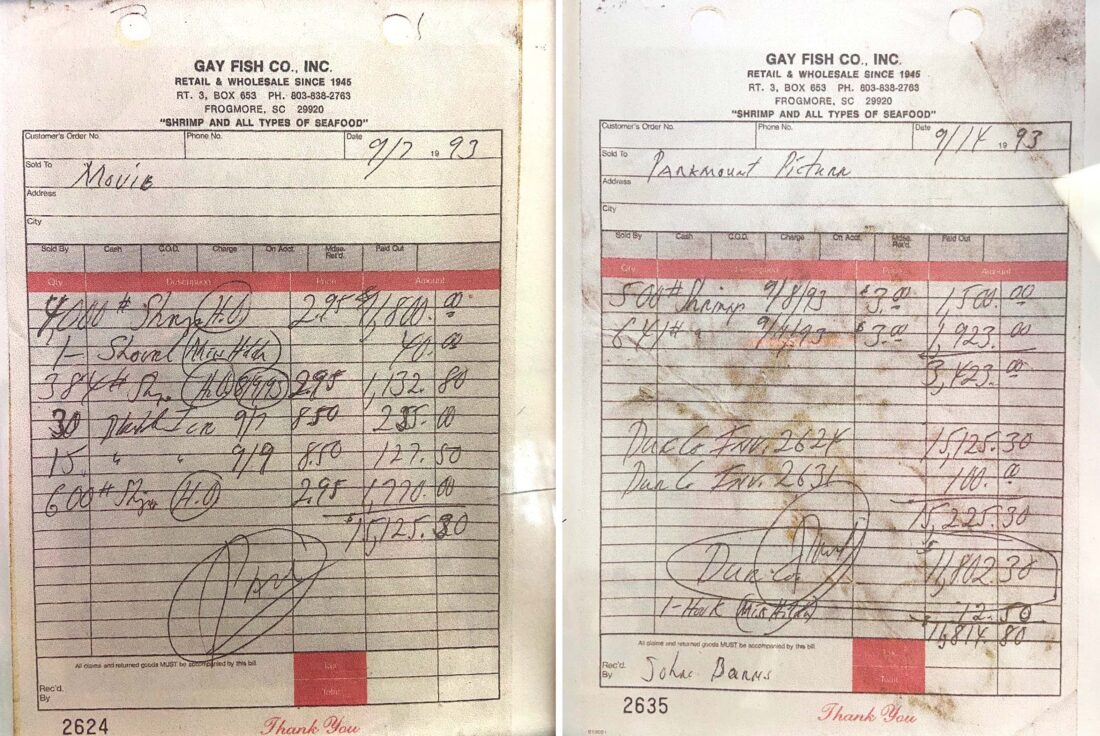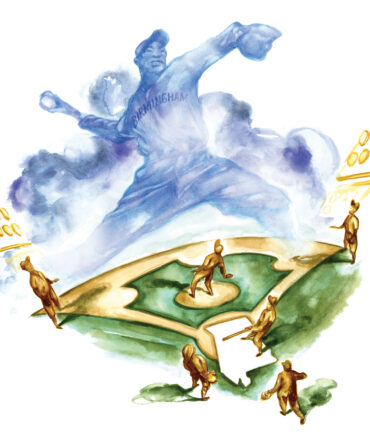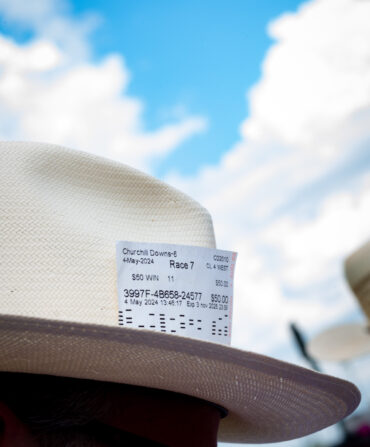Even if you’ve viewed Forrest Gump only once, you likely gleaned that life is like a box of chocolates, in that you never know what you’ll get. Turns out, Forrest’s oft-quoted adage also applies to an old filing cabinet at Gay Fish Company on Saint Helena Island, South Carolina, which recently yielded a pair of thirty-year-old receipts documenting the sale of shrimp to the Paramount Pictures production.
The find was prompted by a chat between co-owner Charles Gay, now seventy-seven, and daughter Cyndy Carr about the filming of the Southern-set movie at nearby locales in 1993. (In this case, the island subbed for southern Alabama.) The seafood was needed for the pivotal scene in which novice shrimp boat captain Gump and fellow Vietnam War vet Lieutenant Dan haul in a huge load of crustaceans in the aftermath of 1974’s Hurricane Carmen. When the swollen net spills its bounty across the boat deck, the Bubba Gump Shrimp Company becomes an unlikely success.
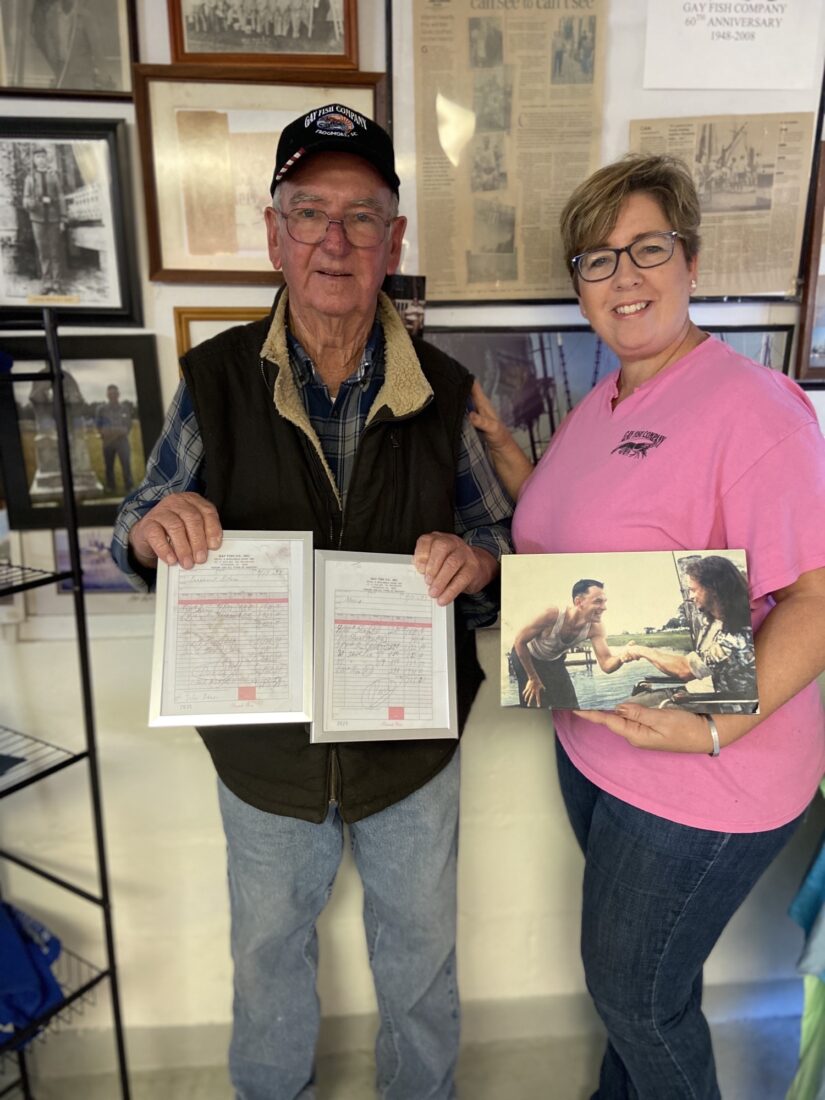
“We already knew they were filming because they took a lot of boats just up the way to Sam’s Point,” Gay remembers, adding that Gump’s creaky boat Jenny was actually the former Miss Sheri, purchased from a local shrimper. “They’d bring Tom Hanks back to our dock, and a limousine would pick him up in the parking lot. He had to walk right where we unload boats, and he was as nice as he could be.”
Even so, Gay didn’t expect crew members to stroll in and request shrimp for the upcoming scene, much less a whopping initial order of nearly five thousand pounds. (Yes, yes, that’s more than enough “fruit of the sea” to barbecue, boil, broil, bake, sauté, and achieve all the other myriad shrimp preparations memorably reeled off by Gump’s Army buddy, Benjamin Buford “Bubba” Blue.)
To explore those smudgy receipts a bit further, on September 7, 1993, the crew purchased 4,984 pounds of three different sizes of heads-on shrimp at $2.95 a pound, forty-five baskets of ice, and a used shovel apparently taken from the Miss Hilda, a boat named for Gay’s sister. Total cost: $15,125.30, paid on the spot. One week later, crew members returned for 1,141 more pounds of shrimp (apparently not dissuaded by a cost increase of a nickel per pound) and, continuing their desire for random gear, one shrimp basket hook. The total, incorporating another invoice that hasn’t yet turned up, was $11,814.86. The goods were received by a “John Burns,” likely the John W. Burn listed as marine coordinator in the film’s credits.
Gay remembers that the crew discussed wanting enough shrimp to make Gump’s net too hefty to put arms around, and to cover the deck when dumped. That goal was certainly exceeded, because after watching the scene, Gay estimates it involves somewhat shy of six hundred pounds. (As for the few crabs mixed in with the catch, Gay figures they were obtained from a local crabber.)
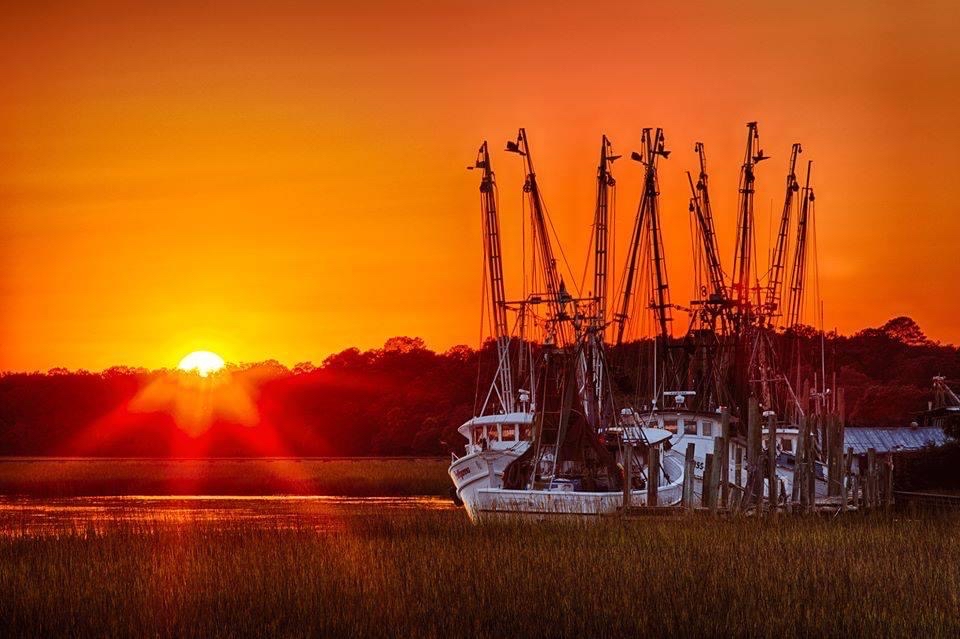
After the scene wrapped, the crew even brought back a large amount of leftover shrimp. Anyone who has spent early September in southern South Carolina knows the likely condition of those shrimp after days of filming in the sun. (This is where you’d be forgiven for quoting another famous Gump line: “Stupid is as stupid does.”)
“I think they iced them at night, but it was still hot down here,” Gay recalls. “I had a guy take it all to a cat food factory, and they called asking me what I was trying to send them.”
For fans who would like to see the movie artifacts in person, the receipts are now displayed in frames at Gay Fish Company, which, despite a decline in local commercial shrimping, maintains a retail counter frequented by locals and tourists alike. “We’ve been a family-operated business here for three generations,” says Carr, who joined her father on the job last year. “This is our seventy-fifth year, so we plan to have a hoopla at some point.”
No doubt, that hoopla will feature a sizable amount of shrimp.


